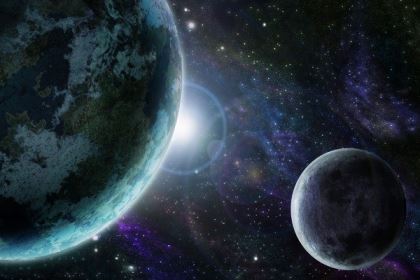Calls From Outer Space

The world has moved on from space shuttle launches, and NASA’s every little move is no longer scrutinised on front pages of newspapers. But thanks to Chris Hadfield, whose guitar song from space went viral, interest in space and NASA has picked up again. We’re not as obsessed about it as we are about – say – the next big celebrity sex scandal – but we’re not blind to it either.
Today we bring you a list of some of the discoveries we made (both about the universe about our own planet) via our space launches.
Magnetic Space Bubbles
If the scientists are to be believed, and if these things
Eris
When we were growing up, the solar system was made of nine planets and the Sun. But now, recent discoveries are testing that theory. The latest entrant in the list of heavenly bodies comes in the form of Eris and its moon, Dysnomia, which lies a bit further out from Pluto. (In ‘space’ terms, ‘a bit’ means ‘a lot’.) Debate has raged in astronomical circles whether or not it should be called a planet, but now we seem to be going the other way and stripping Pluto of her planetary status. Soon we will have textbooks name only eight planets in the solar system. By the new definition of a planet, a heavenly body has to dominate its orbit enough to be able to clear objects out of its path. Pluto isn’t, so out it goes.
Water on Mars?
Mars has always been the favourite of science fi
A super massive black hole
The story here begins in 1995, when scientists began to track fleet-footed star called S2, which seemed to run along a speedy orbit around a compact, invisible, massive object that wasn’t visible. In 2008, after much data mining and theorising, it was confirmed that the object of S2’s attention is indeed a huge black hole (named Sagittarius A) that sits in the middle of the Milky Way, and in all probability turns it on its rim. It is said to be the mass of 4.3 million Suns. If you’re trying to imagine how massive that is, don’t even try. It’s not humanly possible. Let’s just call it ‘super massive’ and get it over with.
The echo of the Big Bang

‘Are we alone in the universe?’ is a question that most of us have. Discoveries like these may not give us answers straight away, but the tunnel of darkness is lighting up, one tiny speck at a time. That day may not be far when we can find a planet like our own in a distant Solar System which supports intelligent life. Until then, we must continue looking.
Related Posts
[catlist name=Science,Handpicked]





